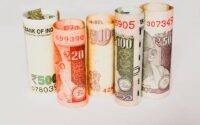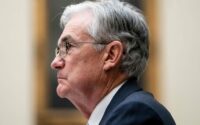Gold falls back despite US Dollar retreats ahead of inflation data
- Gold price remains sideways as the market awaits US inflation data for further action.
- The US Dollar corrects marginally, while the broader bias remains bullish due to US economic resilience.
- Fed policymakers are expected to maintain the status quo on September 20 as US inflation is falling and the economy is better balanced.
Gold price (XAU/USD) struggles to find a direction as investors await the US Consumer Price Index (CPI) data for August. The precious metal remains sideways despite the US Dollar delivering a corrective move, while investors digest global slowdown fears. US inflation data for August carries significance as it is the last one before the September monetary policy by the Federal Reserve (Fed), which is widely expected to remain unchanged.
Last week, Fed policymakers vocally supported maintaining the status quo on September 20 as inflation is falling and the labor market is loosening up. The appeal for the Gold price could be dampened ahead due to expectations of a healthy performance from the US Dollar. In comparison with other G7 economies, the US economy is better absorbing the impact of higher interest rates. The nation is demonstrating itself as resilient, which should heighten demand for the US Dollar.
Daily Digest Market Movers: Gold price juggles despite US Dollar softens
- Gold price continues to consolidate inside the $1,924 to $1,931 range from the past three trading sessions as investors await the United States inflation data for August, which will be published on Wednesday at 12:30 GMT.
- Investors will stay focused on the inflation data for August. Headline inflation is seen expanding at a significantly higher pace of 0.5%, while core CPI that excludes volatile oil and food prices is seen steady against July’s pace of 0.2% in both segments.
- US headline inflation is seen growing at a higher pace due to the recovery in gasoline prices, which squeezes households’ income.
- The release of the August CPI data will build a base for September’s monetary policy.
- The precious metal remains sideways amid uncertainty over the interest rate peak for the remaining year, while the September monetary policy is expected to remain unchanged amid supportive economic data.
- As per the CME Fedwatch Tool, traders see a 57.6% chance of interest rates remaining unchanged at 5.25% to 5.50% by year-end.
- Labor growth remained stable in August, while the Unemployment Rate rose to 3.8%. Wage growth slowed, which could slim consumer spending momentum ahead. This could ease additional inflationary pressure.
- Fed policymakers: Dallas Fed Bank President Lorie Logan and New York Fed Bank President John Williams supported an unchanged interest rate decision for September monetary policy last week but kept doors open for further policy tightening in the future.
- Fed Williams said there is no urgency for an interest-rate increase this month as inflation is falling and the economy is better balanced.
- The yellow metal remained lackluster despite some correction in the US Dollar Index (DXY) from its six-month high of 105.00. The USD Index dropped to near 104.60 as deflation risks in China eased in August due to a nominal recovery in inflationary pressures.
- One month of nominal recovery in China’s inflation data is sufficient to warrant economic growth, which will keep the overall trend for the US Dollar bullish.
- Investors are keenly watching whether the central bank pushes the US economy to the “golden path”, meaning a situation where inflation recedes without triggering a recession.
- US Treasury Secretary Janet Yellen said she is confident that the central bank will contain inflation without damaging the job market. She doesn’t see China-led BRICS expansion as a major threat to the economy.
- About the US Dollar outlook, investors see more strength in the near term as the US economy is better at absorbing the repercussions of higher interest rates among G7 economies. The US economy seems less sensitive to rising mortgage rates, unlike the economies of Canada, the United Kingdom, and the Eurozone, which are facing the threat of a vulnerable economic outlook.
- Bank of America (BofA) strategists expect that the expression of “higher for longer” interest rates by the Fed will trigger a sell-off in equities over the next two months.
Technical Analysis: Gold price remains below $1,930
Gold price has traded back and forth in a narrow range for the past four trading sessions amid deepening uncertainty over interest rates for the remaining year. The precious metal is expected to deliver a power-packed session after the release of Wednesday’s inflation data. The 50-day Exponential Moving Average (EMA) at $1,930 is consistently acting as a strong barrier for Gold bulls. Momentum oscillators indicate a sideways action, indicating that investors await a fresh economic trigger.
Inflation FAQs
Inflation measures the rise in the price of a representative basket of goods and services. Headline inflation is usually expressed as a percentage change on a month-on-month (MoM) and year-on-year (YoY) basis. Core inflation excludes more volatile elements such as food and fuel which can fluctuate because of geopolitical and seasonal factors. Core inflation is the figure economists focus on and is the level targeted by central banks, which are mandated to keep inflation at a manageable level, usually around 2%.
The Consumer Price Index (CPI) measures the change in prices of a basket of goods and services over a period of time. It is usually expressed as a percentage change on a month-on-month (MoM) and year-on-year (YoY) basis. Core CPI is the figure targeted by central banks as it excludes volatile food and fuel inputs. When Core CPI rises above 2% it usually results in higher interest rates and vice versa when it falls below 2%. Since higher interest rates are positive for a currency, higher inflation usually results in a stronger currency. The opposite is true when inflation falls.
Although it may seem counter-intuitive, high inflation in a country pushes up the value of its currency and vice versa for lower inflation. This is because the central bank will normally raise interest rates to combat the higher inflation, which attract more global capital inflows from investors looking for a lucrative place to park their money.
Formerly, Gold was the asset investors turned to in times of high inflation because it preserved its value, and whilst investors will often still buy Gold for its safe-haven properties in times of extreme market turmoil, this is not the case most of the time. This is because when inflation is high, central banks will put up interest rates to combat it.
Higher interest rates are negative for Gold because they increase the opportunity-cost of holding Gold vis-a-vis an interest-bearing asset or placing the money in a cash deposit account. On the flipside, lower inflation tends to be positive for Gold as it brings interest rates down, making the bright metal a more viable investment alternative.
[ad_2]
Source link


